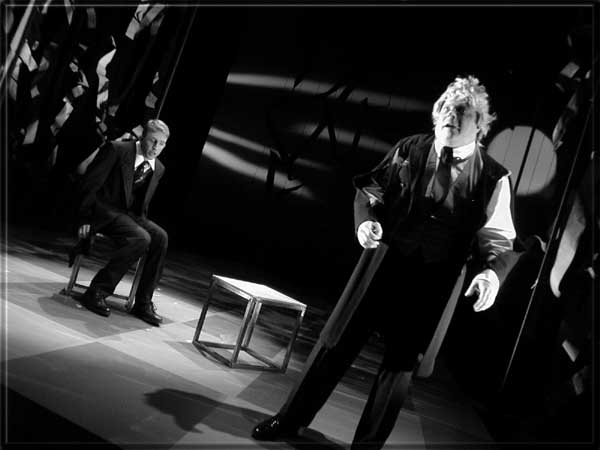Many of the new techniques that came about in theater in the 20th century were implemented by Elmer Rice in The Adding Machine. Rice created distorted images and scenes throughout his piece to convey his story of Zero's life. Additionally, station-to-station storytelling was used, along with other abstract expressionist techniques.
Expressionist art...a classic example by Edvard Munch (1893) The Scream
By illustrating several abstract and subject states throughout Zero's journey, Rice was able to present his character in an emotional and open-to-interpretation method. For example, Rice would use station to station storytelling by talking about Zero's life at home, work, prison, the trial and even after his death. Abstract and subjective scenes were incorporated in the scene at work; additionally, he creates dreamlike scenes in prison, the graveyard and in heaven. By illustrating so many unrealistic scenes, Rice forces the reader to interpret Zero's story and struggle from a different perspective which focuses on emotion.
I thought the real life performances of this play were slightly creepy...
Other techniques used by Rice in The Adding Machine were split monologues in which a character would go on for lengthy conversations with themselves in the presence of another character. An example for this type of dialogue was in the work scene and an example of a lengthy internal conversation was at the dinner and trial scene. Rice's distorted and radical storytelling is a reflection on Zero's life: the man killed his boss out of rage because he was being replaced by an 'adding machine'. This machine, which would now calculate numbers instead of the accountant, also sort of represents the distorted and unrealistic way in which this story was told.
A representation of Zero in a play...the abstract background gives off a dreamlike (more like a nightmare) image
The ending to The Adding Machine portrays humans in a negative light; society is portrayed as being corrupted by machines and technology while humans are slowly losing their grip on morality. The play/plot leaves the audience/reader hanging with a sick feeling in their stomach which forces them to question some of the things they do in their own lives, a sort of catharsis. I enjoyed this story because it was dark and a psychological thriller in which Elmer Rice used a wide variety of unorthodox techniques to convey a deep and real message.



No comments:
Post a Comment